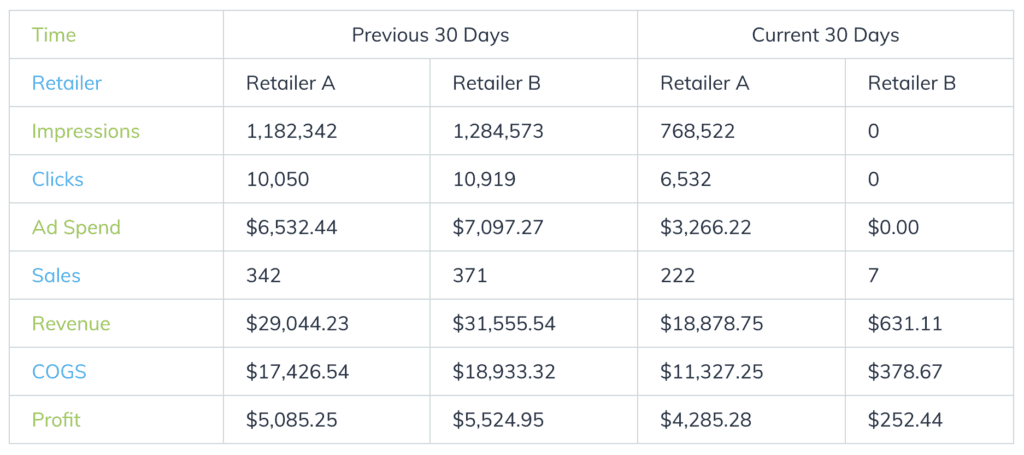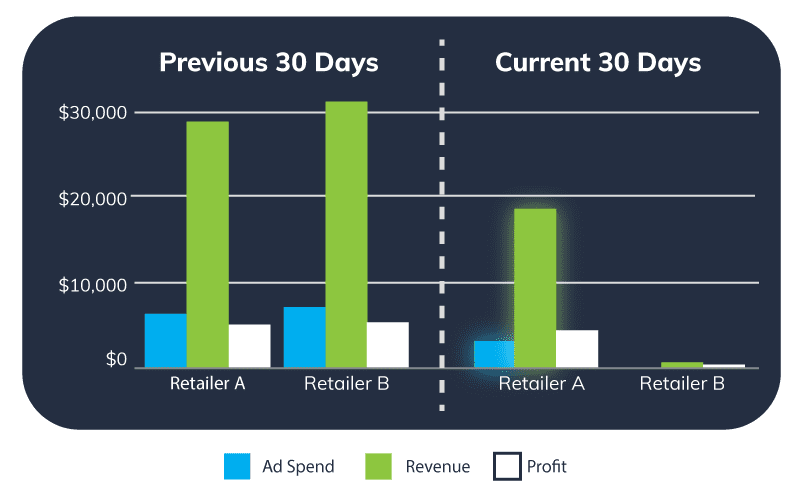The Issues
As the COVID-19 pandemic worsens, the global economy is becoming increasingly restricted. Product hoarding increases demand for some items, like paper products and medical supplies, and impacts the supply chains for those items. Manufacturers both here and abroad are either closing or seeing a reduction in workforce as cases ramp up and more people are either ill or quarantined. This all affects retailers’ ability to stock—and sell—products.
Consumer behavior changes in times of economic instability as well. Fewer people working means less available disposable income, and consumers tend to hold off on larger and non-essential purchases when times are tough.
Finally, much of the American economy has simply come to a halt as a result of the pandemic. Nearly every state nationwide has closed bars and restaurants to dine-in customers, and many have closed all non-essential businesses as well. California, which boasts America’s largest state economy and the fifth largest in the world, is under a shelter-in-place order for the foreseeable future. While many businesses can operate remotely, many more cannot—leaving those workers without income.
So, how should your business react to these issues?
What If I Can’t Sell My Products?
This seems like a big deal for retailers, and for many it is. There are ways, though, to keep driving revenue even in the midst of economic instability.
The first step is to keep a close eye on and try to mitigate any potential stock issues. We discuss this in a previous blog about the COVID-19 pandemic and ecommerce.
If supply chain problems are causing large gaps in your product catalog, you might want to consider adding other complementary products to your listings until the situation has passed. For example, a company that sells Western wear might want to branch into cowboy boots or designer belt buckles.
Should I Turn Off My Google Shopping Ads?
The key point: do not turn off your advertising entirely. There are very, very few situations in which we’d advise halting your advertising program. Most retailers can continue to drive revenue (and profit!) throughout this period—albeit at a somewhat lower level. As long as you are proactive in managing your stock status, Google will not advertise items that are unavailable in Shopping ads, so you run little risk of wasting clicks on products that can’t sell. You may need to reallocate spend to more profitable ad groups, or lower bids on items whose cost has risen dramatically, but you should continue to drive revenue at a profitable level.
Example: Cutting Back vs. Turning Off Ad Spend
Let’s look at a hypothetical example with two ecommerce businesses, Retailer A and Retailer B. Each has the same average cost of goods, average cost per click, click-through rate, and conversion rate. Retailer B typically leads slightly in sales and profits, though, because they have a slightly larger product catalog and therefore more impressions and clicks. Each business is now faced with supply chain problems.
- Retailer B chooses to halt all Google Ads spend for the next 30 days, in an effort to scale back until the problems can be resolved.
- Retailer A, however, simply limits spend on items that are hard to obtain, and increases spend to those items that are available – like the belt buckles we mentioned above.
Over time, it becomes clear which was the correct choice. Retailer B sees a few sales linked to Google Ads, from users that interacted with ads prior to the halt in ad spend, but overall loses the vast majority of profit driven by their Google Ads.

Retailer A cuts average cost per click by about 25%, which does reduce impressions and clicks significantly. Even with reduced traffic and less revenue, Retailer A sees only a slight reduction in profit from the previous month – about a 15% decrease. (The cost of goods for both retailers remained the same.)

Now, not every business will be able to replicate the success of Retailer A. Not all retailers can reasonably cut ad spend by 25%, and in a real-world scenario other factors like conversion rate and changing cost of goods majorly impact profit figures. With a wise advertising strategy, though, most retailers will be in a better position to weather the storm than they would be if they simply paused advertising.

Manage for Efficiency — Not Dollars
A great way to ensure your program stays profitable is to update your strategy. In times of economic success, it often makes sense to maximize profit dollars. This strategy drives additional revenue with aggressive reinvestment in the ad program. It often yields the greatest total amount of profit —but that profit comes at a higher cost. Along with an increase in ad spend, your cost of goods and variable overhead can rise, limiting cash flow but increasing revenue.
In times of instability, we recommend a much more conservative approach. This strategy maximizes contribution margin, or the percentage of revenue that is preserved as cash profit. It still drives sales—but at a lower rate, with much less investment required in the ads program. Not only does this reduce ad spend, but it also creates an additional cushion you can rely on if sales dip further. This extra cash flow gives you the leeway you need if a popular item becomes unavailable due to supply chain problems, or if you are forced to close the business for a period of time.
Example: Maximizing Contribution Margin
Let’s revisit our example from the previous section. Retailer A had a margin of 17.51% in the first 30 day period. After cutting back spend, profit falls slightly – but margin improves to 22.7%. This proves that despite the decrease in whole dollar profits, the campaigns as a whole are running much more efficiently.

Because you’re adapting your ads strategy to fit changing times, it’s crucial to consider your metrics when comparing year over year performance for this period. You cannot simply compare year over year performance in terms of sales and revenue now due to the current decrease in global demand. You can, though, compare margins to make sure that you’re as efficient as you need to be. Margins will be impacted, but are a much more accurate measure than profit dollars, which will be substantially impacted by changes in demand.

Coping with Crisis
Obviously, these aren’t ideal circumstances for any business. The best case scenario is to hope for a quick end to the COVID-19 global crisis, and for a rapid recovery. We do hope though, that these steps can help you weather the storm, and preserve profit even in these troubling times.








